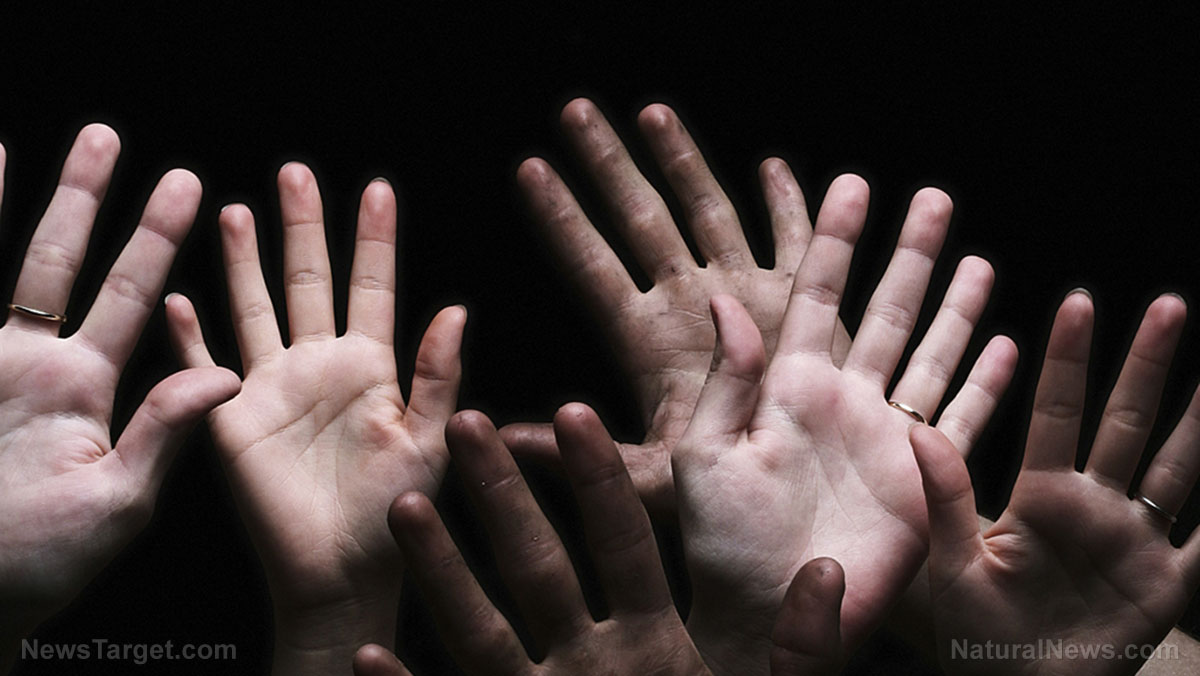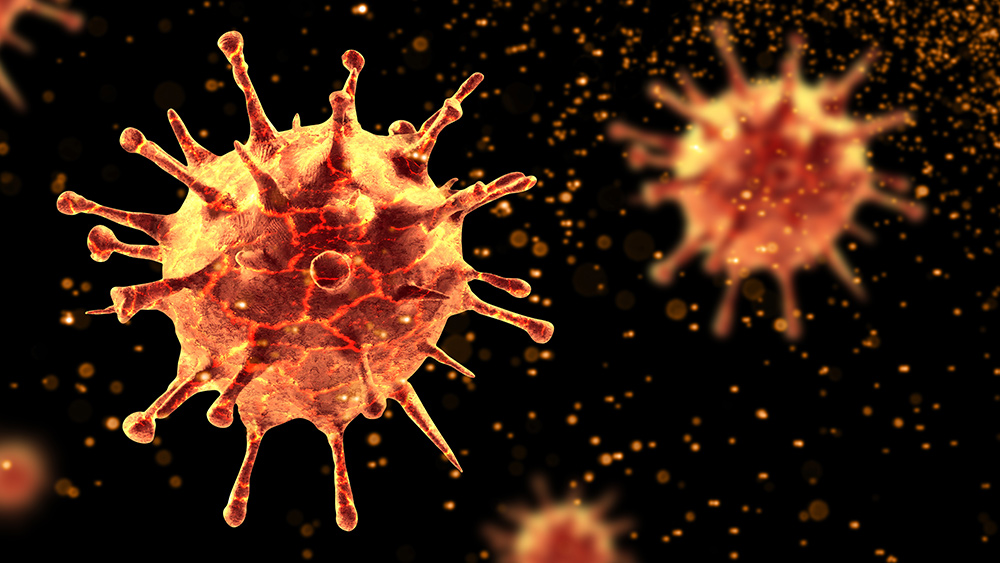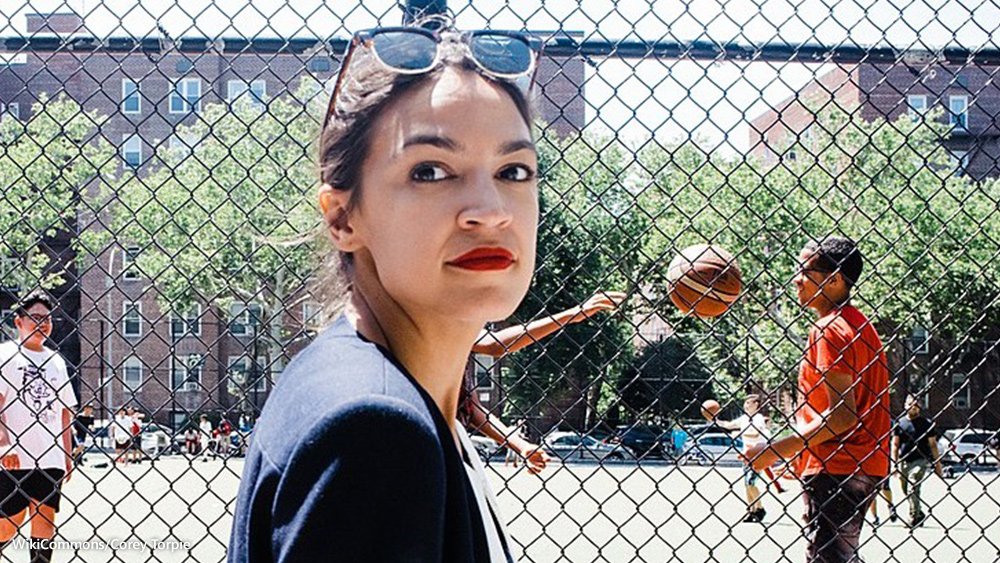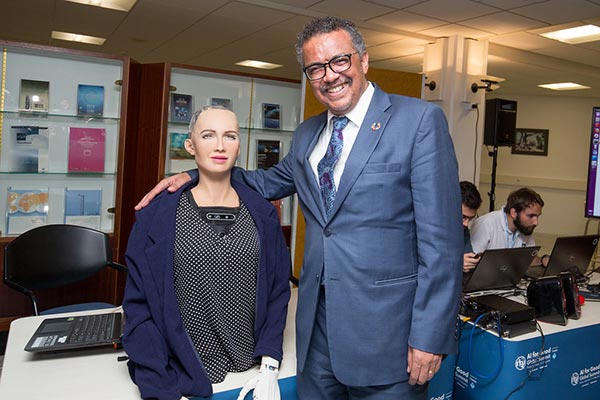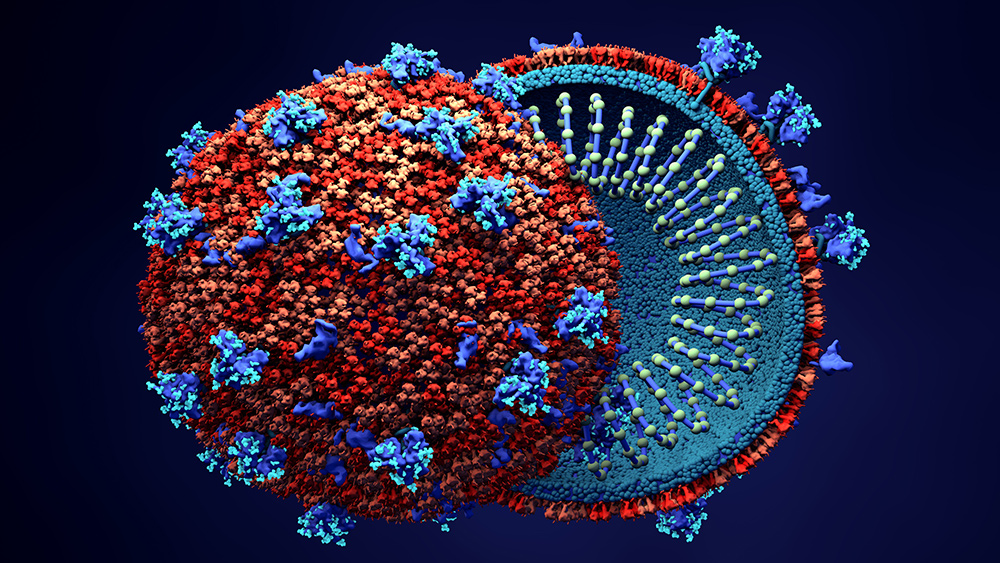Tracing the origins of COVID-19
06/04/2020 / By News Editors

On December 9, 2019, long before the world knew anything about it, a video interview took place with one of the key players in the COVID-19 drama, Dr Peter Daszak, President of the EcoHealth Alliance, who inadvertently may have provided indications of its true origin.
(Article by Lawrence Sellin republished from Wionews.com)
Much of that discussion centred around the severe acute respiratory syndrome coronavirus (SARS) epidemic of 2002-2004, which was believed to have originated in bats, although civets may have acted as an intermediate host.
While circulating in animals, the SARS virus mutated, acquiring the ability to infect humans, which it was assumed to have done so, infecting workers in a Guangdong, China animal market.
That explanation became the narrative now being promoted by the Chinese Communist Party, the media and some Western scientists to convince the world that COVID-19 was a naturally-occurring outbreak.
Beginning at 27:49, Dr Daszak explains the basis of the naturally-occurring narrative and the collection of over one hundred bat coronaviruses capable of infecting humans, but untreatable with drugs or vaccines. Those coronaviruses are presumed to be stored in Chinese laboratories.
“So, we did a couple of things with it. So, one is around SARS. We focused on SARS coronavirus emerged from a wildlife market. And whilst the first pandemic of this century. So, it’s big event. And, so we started to trace back from the wildlife market, which species carried the virus, that came into those markets. We found that it was bats, not civets, was the original idea. So, we started looking where did they come from. And we went out to southern China. And did surveillance of bats across southern China. And we’ve now found, after six or seven years of doing this, over one hundred new SARS-related coronaviruses, very close to SARS. Some of them get into human cells in the lab. And some of them can cause SARS disease in humanized mouse models. And are untreatable with therapeutic monoclonals [antibodies] and you can’t vaccinate against them with a vaccine.”
At 29:51, Dr Daszak describes bioengineering of those viruses by inserting components of one coronavirus into another.
“Well, I think, coronavirus is a pretty good, I mean, you’re a virologist [the interviewer], you know all this stuff, but the, you can manipulate them in the lab pretty easily. Spike protein drives a lot of what happens with the coronavirus, zoonotic risk. So, you can get the sequence, you can build the protein, and we work with Ralph Baric at UNC [University of North Carolina] to do this. Insert it into a backbone of another virus, and do some work in the lab. So, you can get more predictive, when you find the sequence. You have this diversity. Now, the logical progression for vaccines is, if you are going to develop a vaccine for SARS, people are going to use pandemic SARS, but let’s try to insert these other related and get a better vaccine.”
In 2015, Ralph Baric from the University of North Carolina and Zheng-Li Shi, the “bat woman” from the Wuhan Institute of Virology jointly published a scientific article describing the combination of the receptor-binding spike protein from a newly isolated coronavirus (SHC014) and the “backbone” from SARS-CoV, the coronavirus responsible for the 2002-2003 pandemic.
That experiment produced a novel virus, chimera SHC014-MA15, which showed “robust viral replication both in vitro [cell cultures] and in vivo [animals],” using models adapted to test human infectivity.
The scientific consensus claims that COVID-19, like SARS, originated in bats.
There is conclusive scientific evidence, however, that COVID-19’s receptor binding domain within the spike protein is structurally closest to that of pangolins (scaly anteaters), not bats, and it was the result of a recombination, not convergent evolution.
Yet, pangolins have been ruled out as the intermediate host for COVID-19.
Even Dr Ralph Baric in a March 15, 2020 interview, beginning at the 27:40 time point, stated unequivocally, that pangolins were not the source of COVID-19:
“Pangolins have over 3,000 nucleotide changes – no way they are the reservoir species [for COVID-19], absolutely no chance.”
It is, therefore, logical to conclude that the recombinant event resulting in a pangolin receptor binding domain within a bat coronavirus backbone must have occurred in a laboratory, in a manner similar to the experiment conducted by Ralph Baric and Zheng-Li Shi in 2015.
Furthermore, COVID-19’s S1/S2 furin polybasic cleavage site, a distinctive feature widely known for its ability to enhance pathogenicity and transmissibility in coronaviruses, does not appear in any of 45 bat, 5 human SARS, 2 civet, 1 pangolin and 1 racoon dog coronaviruses, that have S1/S2 junction structures otherwise identical or nearly identical to COVID-19.
There is no credible scientific evidence that the furin polybasic cleavage site evolved naturally, although the methods for artificially inserting such cleavage sites are well-established.
It is important to note that the EcoHealth Alliance gets 80% of its funding from the U.S. government (9:22), has “been working in China for years” (19:40), and presumably uses U.S. taxpayer money to “hire technicians in labs or Ph.D. students” (12:08) in order to “teach people how to do it and give them the capacity and the tools” and “then you have really made a difference” (13:15).
Indeed. The EcoHealth Alliance may have really made a difference.
Read more at: Wionews.com
Tagged Under: biological weapons, bioweapons, China, coronavirus, covid-19, epidemic, genetic engineering, genetic lunacy, pandemic, SARS, virology, virus, Wuhan
RECENT NEWS & ARTICLES
COPYRIGHT © 2017 NATIONAL SECURITY NEWS


